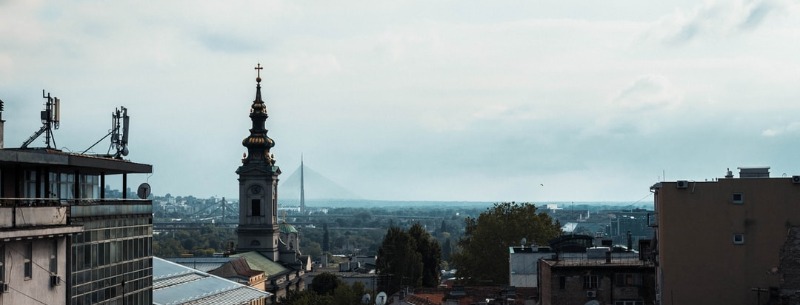Belgrade, capital city of Serbia
Nestled between the Sava and Danube Rivers, Belgrade is a gem of a city full of passion, finesse and grandiosity. The heart of the city is filled with interesting bookshops, world-class restaurants, eclectic galleries and dazzling architecture, and the streets always seem to be filled with people. The capital’s ultimate appeal is its lively nightlife, but the days in Belgrade are filled with wonderful opportunities for exploring the many stimulating museums, charming parks and distinct neighborhoods.
Start your visit at the National Museum, where over 400,000 works of art and artifacts tell the fascinating story of Serbia’s history and culture. The 34 galleries detail the country’s artistic, historical, archeological and numismatic highlights, including everything from Roman relics to NATO military aircraft and masterpieces by Titian, Renoir, Matisse, Monet, van Gogh and other celebrated artists. There really is something for everyone at the National Museum, and it takes at least a full day to browse the entire collection.
One of the most influential and famous Serbs is Nikola Tesla, and there is an entire museum dedicated to his work and life in Belgrade. Half of the small but impressive museum is filled with the scientist’s personal effects, while the other half displays models of his pioneering inventions, including AC motors, alternative currents, radios and other feats of electric engineering.
Take an afternoon to explore the White Palace, a prominent mansion that spans more than 100 hectares. Built in 1924, the palace is a stunning example of the Serbian-Byzantine architectural style and today is the home of Crown Prince Alexander II. The palace is open to visitors from April to November, and small group tours lead them through the enormous library, Venetian-style sitting rooms, frescoed chapel and outstanding art collection. The two-hour tour is a great way to get acquainted with Serbia’s art, history and culture while catching a glimpse of royal life.
Belgrade is dotted with many churches, the arguably most beautiful of which is the Sveti Marko Orthodox Church. Built in 1931, the church’s interior evokes the Byzantine era through priceless icons and decadent ornamentation. Other churches worth a visit include the richly decorated Belgrade Cathedral, Church Ruzica, Belgrade’s oldest church, and the Church of St. Alexander Nevsky, loaded with frescoes, relics and artwork dedicated to Russian czars and Serbian warriors.
Another must-see sight in Belgrade is the Kalemegdan Citadel. Over the last two centuries, more than 100 battles have been waged at the site, but today the ancient fortress walls surrounded the city’s sprawling central park. It is a favorite place for visitors and locals to soak in the summer sun, spend the afternoon picnicking or watch the sunset over the Danube in the evening.
Once the sun sets, Belgrade really comes alive. The capital’s vibrant nightlife makes every day feel like Saturday. Locals head to Skadarlija Street to listen to local bands play traditional style music in the pubs that line the cobblestoned pedestrian street or spend the evening at the many crowded but friendly bars on Knez Mihailova Street. The Gardosh neighborhood also shines at night with its large amount of traditional and world-class restaurants, some of which are housed on boats that lazily cruise down the river while serving up some of the city’s best food. During the summer, locals swamp the Ada Ciganlija, an island surrounded by Belgrade’s artificial lake. Bonfires light up the beaches and the scent of barbecues fills the air as revelers celebrate another night in the city.
Belgrade Geographical Location
Belgrade is in the center of Serbia towards the north where the Sava and Danube Rivers meet.
Belgrade is the largest city in Serbia with a population of approximately 1,670,000.
Belgrade Language
Serbian is the official language of Serbia with a small percentage of the population speaking Hungarian, Bosniak or Romany.
Belgrade Predominant Religion
- 85% Serbian Orthodox
- 5.5% Catholic
- 3% Muslim
- 3% Athiest
- 3.5% Other
While 85% is the national figure for those practicing Serbian Orthodox, Belgrade is believed to have a percentage well over 90%.
Belgrade Currency
The official currency of Serbia is the Serbian Dinar.
Belgrade Climate
Belgrade experiences four distinct seasons with moderate rainfall throughout the year. Winters are normally cold and with very few hours of sunlight while summer experience the most hours of sunlight and hot temperatures.
Belgrade Main Attraction
- Kalemegdan Fortress and Park
- Republic Square
- St Sava Temple
Other Attractions in Belgrade
- Zemun
- The Old Bohemian Quarter
- National Museum
- Ada Ciganlija
